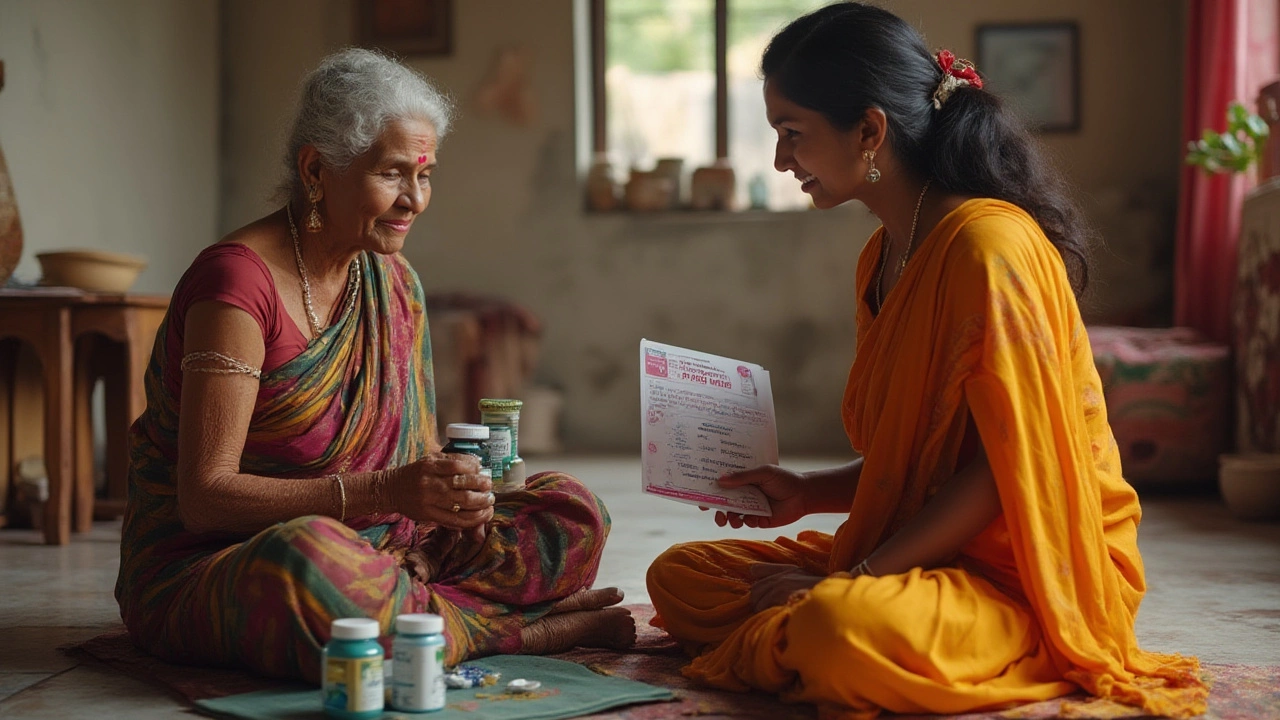Arthritis Painkiller Guide: What’s Safe and What to Watch Out For
If you’ve got joint pain that won’t quit, you’ve probably reached for an over‑the‑counter pill or a prescription from a doctor. In India, arthritis painkillers are easy to find, but not every tablet is harmless. Some can harm your liver, stomach, or kidneys, especially if you take them for months. This guide shows you which drugs are common, what red flags to look for, and how to pick a safer option without guessing.
Common Arthritis Painkillers and Their Risks
Most people start with non‑steroidal anti‑inflammatory drugs (NSAIDs). Ibuprofen, diclofenac, and naproxen reduce swelling and give quick relief, but they can irritate the stomach lining and raise blood pressure. In India, diclofenac is sold in cheap brands that often lack clear dosage instructions, so accidental overuse is a real problem.
Stronger prescriptions include opioids like tramadol or morphine. They mask pain well, but they also cause drowsiness, constipation, and the risk of dependence. If you notice cravings or trouble sleeping after a few weeks, it’s a sign to stop and talk to your doctor.
Corticosteroid injections or oral steroids such as prednisolone shrink inflammation fast, but they can raise blood sugar and weaken bones if used long‑term. Many patients don’t realize that a short burst can still trigger a spike in blood pressure.
Some herbal or Ayurvedic preparations claim to ease arthritis pain. While many are safe, a few contain heavy metals or untested chemicals that can be toxic. Always check if the product has a label approved by the Food Safety and Standards Authority of India (FSSAI).
How to Choose a Safer Option
First, talk to a qualified doctor who knows your medical history. A simple blood test can tell if your liver or kidneys are already under stress, which helps the doctor pick the right drug dose.
Read the label carefully. Look for the active ingredient, strength, and recommended daily limit. If a pill says “use as needed,” set a personal limit—usually no more than three days for NSAIDs without a doctor’s go‑ahead.
Never mix painkillers with alcohol. Alcohol plus NSAIDs raises the chance of stomach ulcers, and with steroids it can worsen blood pressure problems.
If you need a long‑term solution, ask about disease‑modifying drugs like methotrexate or biologics. These aren’t typical painkillers, but they slow the joint damage that causes the pain in the first place. They do need regular monitoring, which most big hospitals in India provide.
Keep a medication diary. Write down the name of each pill, the dose, and any side effects you notice—headache, dizziness, stomach pain, or unusual bruising. This log helps your doctor adjust treatment before serious problems arise.
Finally, consider non‑drug options. Gentle range‑of‑motion exercises, a balanced diet rich in omega‑3 fatty acids, and weight management can lower joint stress. Combining these habits with the lowest effective drug dose often gives the best balance of relief and safety.
Arthritis pain doesn’t have to trap you in a cycle of risky medication. By staying informed, checking labels, and involving a trusted healthcare professional, you can manage pain while protecting your body from hidden toxicity.

Most Effective Painkillers for Arthritis: What Really Works in 2025?
Discover which painkillers work best for arthritis, their pros and cons, new research from 2025, plus practical tips. Learn what to use and what to avoid.

Which Cancers Are 100% Curable?
Feb, 6 2025

How to Lose 20 Pounds Quickly After 50
Apr, 3 2025

What is the Hardest Part of IVF?
Mar, 23 2025

